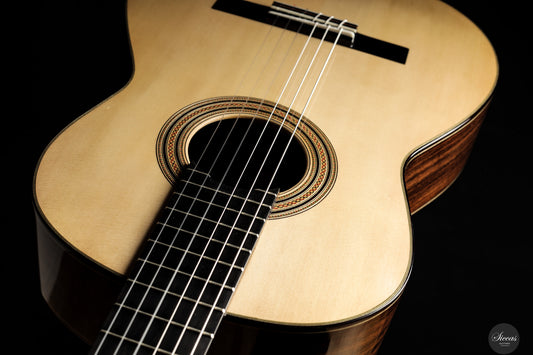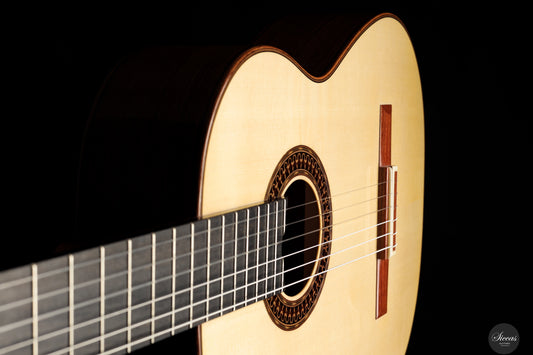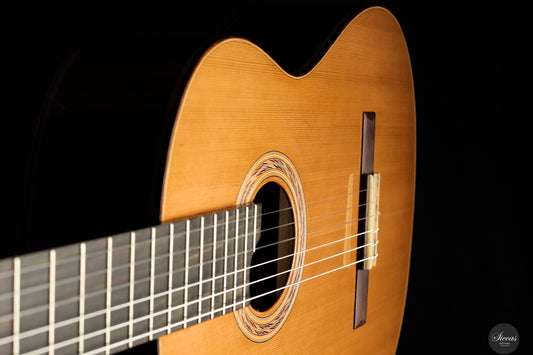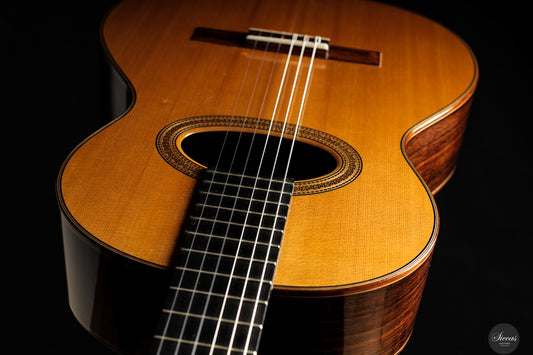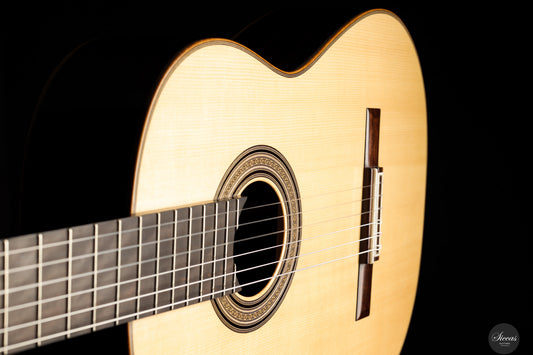
The Timeless Beauty of the Adagio from Concierto de Aranjuez by Joaquín Rodrigo: A Deep Dive into Solo Guitar Arrangements
Few melodies in the classical guitar world are as instantly evocative and emotionally charged as the Adagio—the second movement of Joaquín Rodrigo’s Concierto de Aranjuez. Written in 1939 in Paris for the great Spanish guitarist Regino Sainz de la Maza, this concerto became Rodrigo’s defining masterpiece. Blind since the age of three, Rodrigo composed with an inner vision shaped by sound and memory. He drew inspiration from the royal gardens of Aranjuez, a tranquil palace retreat south of Madrid, with its murmuring fountains and blossoming magnolias. The composer himself said he wanted the music to capture “the fragrance of magnolias, the singing of birds, and the gushing of fountains.” When the concerto premiered in Barcelona in 1940, it brought him instant fame. The Adagio, in particular, remains one of the most hauntingly beautiful and enduring works of the 20th century.
From Concert Hall to Solo Guitar
Originally conceived for guitar and orchestra, the Concierto de Aranjuez’s Adagio has inspired countless solo guitar arrangements. These transcriptions allow the piece’s lyricism and emotion to unfold in a more intimate setting, free from orchestral accompaniment.
Why solo arrangements matter:
-
Versatility: A solo version allows guitarists to perform the Adagio anywhere—from grand stages to quiet studios.
-
Expressive Freedom: Playing solo offers complete interpretative control, enabling the guitarist to shape the phrasing, rubato, and dynamics personally.
-
Technical Challenge: Translating a full orchestral texture to one guitar demands creativity and mastery. It tests a player’s control of tone, balance, and voice separation.
Solo Arrangements That Shine
Many guitarists have reimagined the Adagio for unaccompanied guitar, each bringing a unique artistic voice to the work.
-
Walter Abt: His version skillfully integrates the orchestral textures into one cohesive guitar part, preserving both the expressive horn passages and the flowing string harmonies.
-
Vladimir Gapontsev: A modern interpreter known for his lyrical tone and precision, Gapontsev’s arrangement retains the Adagio’s emotional weight while adapting it gracefully to the guitar’s range.
-
Tono Blasi & Ricard Sánchez: This Spanish duo collaborated to produce a transcription that highlights the Adagio’s lyrical core, maintaining its famous melody and expressive harmonic flow.
Each interpretation reflects a balance between faithfulness to Rodrigo’s original score and the individual artistry of the performer.
The Art of Transcribing Aranjuez
Adapting an orchestral masterpiece for a single guitar is both technically and musically demanding. The arranger must distill the full harmonic richness of the orchestra while keeping the guitar’s natural voice intact.
-
Harmonic Depth: The lush orchestration must be suggested through inventive chord voicings, open-string resonance, and intricate right-hand techniques.
-
Melodic Integrity: The Adagio’s vocal-like melody must remain clear and singing above the accompaniment, requiring precise balance and touch.
-
Technical Mastery: Wide left-hand stretches, independent bass and melody lines, and expressive vibrato or portamento all push the guitarist’s skill to its limits.
A successful solo version captures not only the grandeur of the original concerto but also the intimacy of a single instrument speaking with orchestral depth.
Accessing the Music
Guitarists eager to study or perform the Adagio can find numerous solo transcriptions in both community collections and published editions. Among the most notable is Rodrigo’s own adaptation Aranjuez, ma Pensée, arranged for voice and guitar. Although this version includes lyrics written by Rodrigo’s wife, it preserves the essence and melodic soul of the Adagio, offering valuable insight into the composer’s phrasing and intention.
A Timeless Legacy
The Adagio from Concierto de Aranjuez continues to captivate audiences around the world, transcending genres and generations. Its melody—rooted in the spirit of Spain yet universal in its emotion—remains one of the most beloved in all of classical music. Whether performed with full orchestra or in the quiet intimacy of a solo guitar, the Adagio endures as a testament to Rodrigo’s genius: music that speaks directly to the heart, where beauty, longing, and serenity coexist in perfect harmony.








